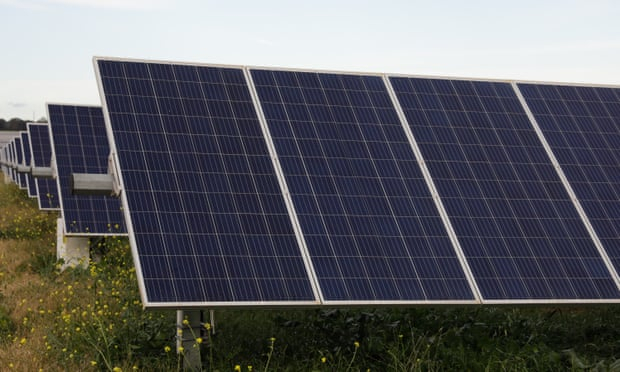Developers plan to build what they say will be the world’s biggest large-scale battery in the New South Wales Hunter Valley, the latest in a flurry of major energy storage projects announced for the national electricity grid.
CEP Energy said its $2.4bn battery at Kurri Kurri, north-west of Newcastle, would have a power capacity of up to 1,200 megawatts – about eight times greater than the battery at Hornsdale in South Australia, which was the biggest when it began operating in 2017.
It would also be significantly bigger than large batteries announced in the past three months for the Lake Macquarie Eraring coal power station in NSW, the Wallerawang power station near Lithgow, Torrens Island in Adelaide and near Geelong in Victoria.
CEP Energy said it was part of a planned network of four grid-scale batteries, including two in Victoria and one in South Australia, that would have a combined capacity of 2,000MW. It was also planning 1,500MW of rooftop solar panels on industrial sites.
Morris Iemma, a former NSW premier and CEP Energy’s chairman, said the clean energy roadmap that passed the state’s parliament last year had given the market confidence to invest in renewable generation supported by large-battery storage without subsidies.
He said big batteries would play a major role in filling the gap left by the retirement of coal and gas plants, including the closure of the Liddell power station in early 2023.
“This project will help ensure the Hunter region of NSW remains true to its heritage as one of the nation’s energy powerhouses as we work towards a cleaner, decarbonised future,” Iemma said.
BirdLife Australia said it was concerned about plans to expand industry in endangered bird habitat in the Tomalpin Woodlands near Kurri Kurri. It said the battery was one of a number of projects that could affect the woodlands, which is one of the few remaining regular breeding areas for two critically endangered species, the regent honeyeater and swift parrot.
The group’s woodland birds project manager, Mick Roderick, said the battery had not been properly thought through. “Renewable energy is great and there are potentially appropriate sites nearby, but this proposal cannot be built in the Tomalpin woodlands,’” he said.
If it goes ahead at the scale planned, the project could challenge the viability of gas-fired power plants proposed for the region by AGL Energy and EnergyAustralia. It would also raise further questions about a Morrison government proposal to instruct the taxpayer-owned Snowy Hydro to build a gas plant at Kurri Kurri if companies have not made commitments by April to directly replace Liddell.
The government has said NSW will need 1,000MW of new flexible electricity capacity that can be called on at any time to support variable solar and wind when Liddell shuts, but the suggestion more gas-fired power is needed in the region to ensure grid stability and keep prices down is contested.
The Australian Energy Market Operator (Aemo) found only an additional 154MW would be needed in NSW by 2023 to meet the electricity grid’s strict “reliability standard”, and that well in excess of that amount had already been announced. Origin Energy, AGL Energy and Maoneng have all recently announced battery projects in the state.
CEP Energy says construction of its big battery is planned to start in early 2022, with operation to begin the following year. It will be built in the Hunter economic zone, one of five renewable energy zones announced by the NSW government.
The company is yet to decide the storage capacity, which will determine how many hours it can run.
Battery technology has taken off more rapidly than was predicted. An Aemo forecast in 2016 suggested the country might have only 4MW of large-scale batteries by 2020, and build no more than that before 2036.
A report in November said the country already had 287MW in operation or committed to construction. Plans for more than 2 gigawatts have been announced since then.
Aemo has suggested the grid will need between 6GW and 19GW of new flexible electricity capacity over the next two decades as old coal-fired plants close and are mostly replaced by solar and wind.
Flexible capacity can come from batteries, pumped hydro, demand management programs and gas. Aemo last year found additional gas-fired power, which is the only fossil fuel on the list, was an option, but not essential as part of an optimal future grid and was likely to be more expensive than alternatives.
The Guardian
More about: #Australia
















































